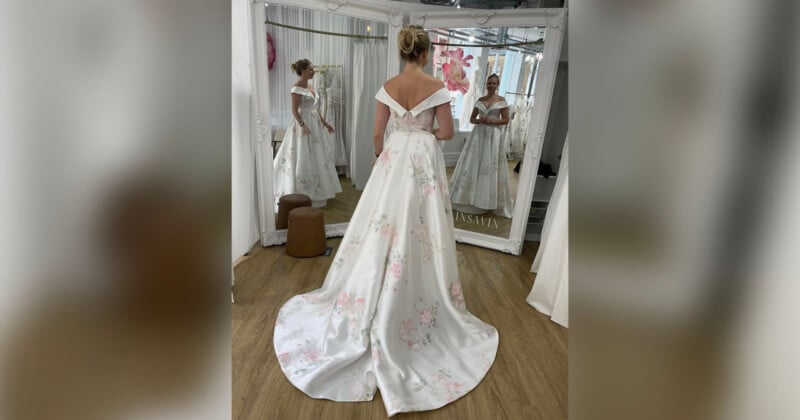
A woman says that “the fabric of reality crumbled” after she looked at an iPhone photo of herself trying on a wedding dress and noticed that her reflection looked different.
Standing in front of two large mirrors, Tessa Coates’ reflection does not return the same pose that she is making; and not only that — but both reflections are different from each other.
The photo is not a “Live Photo” nor is it a “Burst,” it’s just a normal picture taken on an iPhone. Understandably, Coates was freaked out.
“I looked at the photo and I had a full panic attack in the street,” she says on Instagram.
How Did This Happen?
Determined to get to the bottom of the mystery, Coates, an actor and comedian from the U.K., went to the Apple store.
![]()
A technician named Roger explained to her that an “iPhone is not a camera, it’s a computer.”
“It takes a series of burst images very quickly even though it’s not a panoramic or a burst,” explains Coates.
Roger informed Coates that she moved her arms as the camera took a series of images from left to right and it made a different image on each side of the photo.
“It’s made like an AI decision and it stitched those two photos together,” Roger told Coates.
Interestingly, the Apple technician said that after Google brought out the Pixel 8 which takes multiple photos and chooses the best ones, Apple is beta-testing a similar feature.
However, Roger added that what happened in the wedding dress shop was a “one in a million.”
Computational Photography
Smartphones have made huge strides picture-quality-wise in recent years but the big improvements can’t be put down to hardware advancements.
Instead, computational photography has had the biggest effect on smartphone pictures. Computational photography refers to the use of algorithms within a smartphone computer.
People may not be aware of this, but when they click the shutter on their smartphone it takes multiple images and chooses the best elements in a very short space of time.
For example, pixel binning occurs in smartphones which allows the data from four pixels to be combined into one, this increases the overall quality of the image without sacrificing low-light capabilities.
In the summer, PetaPixel published a lengthy explainer article on computational photography.
Image credits: Photographs by Tessa Coates
